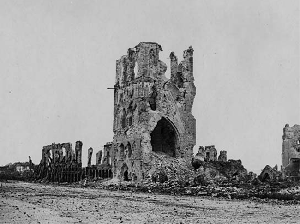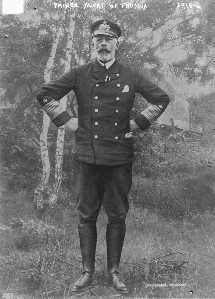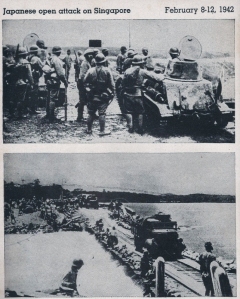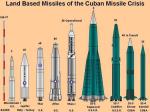Monthly Archives: October 2014
Halloween WWII Style
This story is condensed from: EVERY VETERAN HAS A STORY_______
The other morning I woke up and looked out the window and saw pumpkins smashed and some decorations strewn. “Ah, good,” I said to my daughters, “someone has done their research on the history of Halloween!” They rolled their eyes and kept reading the comics over their bowls of cereal. After 13 years of fatherhood, I’d lost the ability to shock them…or they were hoping by their indifference to ward off the inevitable history lecture to follow. If so — it didn’t work.
Foe much of our history, Halloween wasn’t about trick-or-treating or going around in costumes – it was about vandalism. Halloween celebrates the dark side, the side we reject and fear – all that we try to deny. Mischief making has historically been a part of that. If you look at newspapers 80 or 90 years ago, you’ll see very little about costumes or treats, but a lot about tricks. I think I can make a strong case that WWII stopped the customary vandalism.
They rolled their eyes and kept reading the comics over their bowls of cereal. After 13 years of fatherhood, I’d lost the ability to shock them…or they were hoping by their indifference to ward off the inevitable history lecture to follow. If so — it didn’t work.
Foe much of our history, Halloween wasn’t about trick-or-treating or going around in costumes – it was about vandalism. Halloween celebrates the dark side, the side we reject and fear – all that we try to deny. Mischief making has historically been a part of that. If you look at newspapers 80 or 90 years ago, you’ll see very little about costumes or treats, but a lot about tricks. I think I can make a strong case that WWII stopped the customary vandalism.
 The first Halloween during WWII was in 1942, when the nation was in full-tilt war production mode and millions of men were in uniform. Children and teenagers were suddenly set free from adult supervision, as mothers and fathers spent more time working or away from home altogether. There were widespread fears of juvenile delinquency and criminal behavior. Fear was a dominant emotion during the war years and the vandalism one might expect on Halloween now seemed to portend greater crimes. Many communities did, in fact, cancel Halloween that year.
The first Halloween during WWII was in 1942, when the nation was in full-tilt war production mode and millions of men were in uniform. Children and teenagers were suddenly set free from adult supervision, as mothers and fathers spent more time working or away from home altogether. There were widespread fears of juvenile delinquency and criminal behavior. Fear was a dominant emotion during the war years and the vandalism one might expect on Halloween now seemed to portend greater crimes. Many communities did, in fact, cancel Halloween that year.
 Some folks saw the opportunity to co-opt, rather than ban, the holiday by hosting costume parties, dances, etc. to lure the would-be delinquents off the streets and into safer environments. (Still not much candy available though, due to the rationing of sugar.) It worked. Halloween vandalism feel off in 1942 and after the war, neighborhoods began hosting a kind of roving festival for kids – trick-or-treating.
Some folks saw the opportunity to co-opt, rather than ban, the holiday by hosting costume parties, dances, etc. to lure the would-be delinquents off the streets and into safer environments. (Still not much candy available though, due to the rationing of sugar.) It worked. Halloween vandalism feel off in 1942 and after the war, neighborhoods began hosting a kind of roving festival for kids – trick-or-treating.
 So, this year if you run across some smashed pumpkins, consider them mild throwbacks to a darker version of this holiday……
@@@@@@@@@@@@@@@@@@@@@@@@@@@@@@@@@@@@@@@@@@@@@@@@@@@@@@@@@@@@@@@@
So, this year if you run across some smashed pumpkins, consider them mild throwbacks to a darker version of this holiday……
@@@@@@@@@@@@@@@@@@@@@@@@@@@@@@@@@@@@@@@@@@@@@@@@@@@@@@@@@@@@@@@@


A question for the readers – I seem to recall my mother telling me that Halloween was indeed about the dark side, and Thanksgiving was NOT about turkey dinners. But, thanks to the Depression, that was the day when children went door-to-door begging for food; and that is the reason why some people put fruit instead of candy in the Halloween bags. Does anyone else remember a story like this?
@@@@@@@@@@@@@@@@@@@@@@@@@@@@@@@@@@@@@@@@@@@@@@@@@@@@@@@@@@@@@@@@
To locate and Print OUT the FREE templates to carve your own military pumpkins – CLICK HERE!!
Some of the animated photos for today’s post were created by artist, Kevin Weir, who used archived photos for his work. They were located at HERE!
@@@@@@@@@@@@@@@@@@@@@@@@@@@@@@@@@@@@@@@@@@@@@@@@@@@@@@@@@@@@@@@@

 @@@@@@@@@@@@@@@@@@@@@@@@@@@@@@@@@@@@@@@@@@@@@@@@@@@@@@@@@@@@@@@@@
@@@@@@@@@@@@@@@@@@@@@@@@@@@@@@@@@@@@@@@@@@@@@@@@@@@@@@@@@@@@@@@@@
FAREWELL SALUTES –
Alice Braden – Ogilvie, MN & Waquoit, MA; US Air Force, jet engine mechanic
Cliff Corcoran – Sulphur, LA; US Air Force, MSgt. (Ret. 25 years)
John Gilmore – WPalm Beach, FL; US Army Air Corps, WWII, ETO, 101st
Edward Hopkins – Waiuku, NZ; RNZ Navy # 10691, Chief Petty Officer ’45-’77
John Jacoby – Sacramento, CA; US Army Air Corps, WWII, ETO, POW, Silver Star
John Klingbeil – Edmonton, CAN; RC Army, Chaplain
Felin “Red” Pipkin Sr. – Hinesville, GA; US Army, MSgt. (Ret. 32 years)
Martin Taylor – NY,CA & FL; US Army Air Corps & Reserves, bomber pilot, WWII, POW, LtCol. (Ret)
#########################################################################################################
The Douglas Dauntless & an Eye Witness Story
The SBD dive bombers were the main dive bombers of the US Navy and Marine Corps from late 1940. Some of them, known as A-24 Banshees were employed by the US Army, but they had no arresting hooks and used different tires. In early 1941, the variant SBD-3 went into production and offered increased protection, self-sealing fuel tanks and 4 machine-guns. During the Battle of the Coral Sea, Dauntless bombers took part in the destruction of the Japanese carrier Shoho and in Midway they were involved in all 4 sinkings of Japanese fleet carriers.
A SBD Dauntless crew veteran recalled ______
The Dauntless was a charm; rock steady in a vertical dive, completely responsive to the controls and ready to absorb punishment and still get you home. I was worked over by 2 Japanese Type 97 fighters over Maloelap on the afternoon of 1 February 1942 and came out of it unconcerned with 50 holes through the tail surfaces and left wing tip, a hole in the gas tank in the root of my right wing and one small calibre that broke apart when it hit the back of my armoured seal. Our greatest vulnerability was the inadequate protection of the rear seat gunner. At Midway, a good number of our torpedo plane losses must have come from after the gunner was killed. At that point, the dive bomber or torpedo plane is dead…It was my observation that as long as the tail gunner was firing, the attacking fighter tended to break off the attack before getting into killing range.The 2-man crew were powered by one Wright R-1820-66 Cyclone 9-cylinder radial engine rated at 1,350 horsepower and possessed an armament of two 12.7mm machine-guns, two 7.62mm machine-guns, an optional 1,600 pounds of bombs to be held under the body and an optional 650 pounds of bombs under their wings.
After the Coral Sea and Midway battles, the US Navy developed a highly efficient tactic with the SBD Dauntless; the ability to attack at a steep grade with the “helldiving” technique, while torpedo bombers attacked in conjunction to distract the Japanese gunners. Defensively, the heavy armament of 4 machine-guns posed a serious threat for Japanese fighters, which generally lacked armor protection. After being key participants of the various battles near Guadalcanal and around the Solomon Island area, they took their last major action during the Battle of the Philippine Sea. Their successors, the SB2C Helldiver bombers took over the main role.
During the production life of the SBD Dauntless, 5,936 aircraft were built and they sank more Japanese shipping in the Pacific than any other Allied aircraft.
Click on images to enlarge.
##########################################################################################################
Humor –
##########################################################################################################
Farewell Salutes –
Charles Bullock Sr. – Orlando & Delray, FL; US Army, WWII, 7th Combat Engineers
Clinton Crow – Oxnard, CA; US Army, WWII, ETO / US Navy, Korea (Ret.)
Ronald Ferrie – Victoria, CAN; RC Signal Corps, WWII, Major, ETO
Steven Haase – Olympia, WA; US Army, Iraq, pilot, Warrant Officer, (Ret.)
Philip Laino – Worchester, MA; US Army, Vietnam & Korea, Sgt. Major, (Ret. 41 years)
John McNutt – Tequesta, FL; US Navy, WWII, PTO & CBI
Sean P. Neal – Riverside, CA; USMC, ISIS Campaign
George Pokorny – Thornton, CO; US Army Air Corps, WWII, PTO, C-47 radio operator
Edmund Pollak – Des Moines, IA; US Army Air Corps, WWII, PTO, HeadquartersCompany3/511th Regiment
###########################################################################################################
Restoring the last surviving RAAF Consolidated B-24 Liberator
HERE’S SOME OUTSTANDING AVIATION INFORMATION FROM DEANO_____
 B-24 Liberator Restoration Fund welcome sign
B-24 Liberator Restoration Fund welcome sign
In Werribee a town in Victoria is a very unique piece of Australian military history. The restoration of the lastremainingRoyal Australian Air Force (RAAF) Consolidated B-24 Liberator (and the only one in the southern hemisphere) is taking place there in an old air force hangar. The B-24 was a large (wingspan 33.5 metres/110 feet and length 20.7 metres/68 feet) 4 engined long-range heavy bomber with a 4 ton bomb load designed by the Consolidated Aircraft Corporation of San Diego, California. It was used by the Allies in both the European and Pacific theatres of World War Two for bombing, maritime patrol and transport duties.
The XB-24 prototype of the Liberator was ready for flight by the end of 1939 and proved a successful design. Redesignated the B-24, the aircraft was then put into mass-production
View original post 1,513 more words
A Correspondent’s View
Kenneth Attiwill, Australian playwright, journalist and author described the conditions of Malaya for the Allied troops as they were being pushed back to Singapore. The picture he molds with his words is dramatically similar to what was faced throughout the Pacific. To give you an insight_____
“…the jungles, mangrove swamps and thickly treed areas of cultivation present a particular problem. Visibility is limited…there are no fields of fire and tactical features become insignificant.
“…the jungle itself – a terrifying morass of tangled vegetation, steamy heat, nerve-racking noises and the discomfit of mosquitoes by the myriad, moths, beetles, insects of all kinds, biting, buzzing, irritating and debilitating.
“Rubber too, with its dampness and sound-deadening effect breeds a feeling of isolation…Noise is difficult to pinpoint…In the monsoonal season there is the added handicap of torrential rain, hissing down incessantly upon the greenery, dripping on heads and bodies, humid, sweaty, destructive…
“Within little more than a month, the Japanese had advanced from Siam all the way down the peninsula into northern Johore…Yet, in Johore, the commanders chose to try to defend one strong point, only to be destroyed piecemeal.”
“Withdrawal into Singapore was inevitable. That was the pattern — errors by commanders; insufficient or inadequately trained troops and continuous under-estimation of a savage, speedy, highly skilled and highly mobile enemy.”
Kenneth Attiwill became a POW of the Japanese and was interned on both Java and later Japan. He survived his ordeal and married author, Evadne Price. He wrote “The Singapore Story” to describe the events up to the surrender and “The Rising Sunset” about his time in captivity. Mr. Attiwill passed away in 1960 and the youthful age of 54.
Click on images to enlarge.
News articles are courtesy of Trove.com
########################################################################################################
Current News – THE AMERICAN VETERANS DISABLED FOR LIFE MEMORIAL HAS NOW BEEN DEDICATED – Take a moment.
Does Little Rock like this one? Did I do the veterans justice? Let me know.
#########################################################################################################
Paintings by WWII POW Lance Bombardier, Des Bettany –
#########################################################################################################
Farewell Salutes –
Joseph Brugliera, Jr – Jupiter, FL; US Navy, WWII, destroyer radioman
Richard Bensacca – Soledad, CA; US Army, WWII, aircraft engine mechanic
John Cain – Ottawa, CAN; RC Army, P.P.C.L.I., Korea
Jack Dahlgren – Oilton, OK; US Army, 291st Antitank/75th Div., USAAF, P-38, P-47 pilot, WWII
George Hill – Las Vegas, NV; US Air Force (Ret. E-6 20 years), 3 tours Vietnam
Harvey Johnson – Kansas City, MO; US Navy, WWII, pilot
Bruce McRobie – Northbridge, NZ; RNZ Navy, WWII
Lloyd Oczkewicz – Everett, WA; US Army,WWII, ETO, Bronze Star
Robert Pratt – Lake Worth, FL; US Army, Korea
#######################################################################################################
February 1942 (1)

(top) Navy plane over Wotjie Atoll, smoke is from fuel & ammo dump eruption. (bottom) 2 US vessels during battle
1 February – Adm. Halsey sent aircraft from the Enterprise and Yorktown to strafe and bomb Kwajalein and 5 other sites during the Marshall-Gilbert raids. A fleet that also included the Salt Lake City and Northhampton. Enemy transports were sunk or damaged and the Japanese commanding admiral was killed, at the cost of 13 planes. The enemy retaliated and hit the Enterprise. The US exaggerated the success of this battles by using headlines that read, “Pearl Harbor Avenged.”
Further information on this___Link Here.
In the Java/Sumatra area, allied naval forces were small compared tho the enemy fleet. After a confrontation occurred between the two sides, the USS Marblehead found it necessary to go to Ceylon for repairs and the Houston‘s rear turret was out of commission. Australian and Dutch troops on Sumatra were driven south. The following day, the Dutch naval base at Surabya, on Java, was heavily damaged by an enemy air attack.
4 February – in the Madura Strait, Netherlands RAdm. Doorman suffered a massive air attack as his allied naval forces attempted to intercept a Japanese invasion fleet off Borneo. One Dutch cruiser and 2 US cruisers were damaged. 10-20 February – the Japanese made paratrooper drops on Sumatra as Borneo and Celebes went under the enemy’s control. The Japanese then followed up with jumps on Kupang, Timor. Dutch and US ships engaged the enemy’s navy in the Badeong Strait (east of Bali). One Japanese destroyer was damaged and the Dutch lost 2 vessels.
Gen. Percival had made the error of concentrating his force of the 18th British Division on the coastline of Singapore and the 22nd Australian Brigade in the dense mangrove swamps. On 7 February – Gen. Yamashita sent the Konoye Division across the strait, headed directly to those swamps. By dawn of the following day, 30,000 enemy troops were ashore attacking in bayonet charges during the pouring rain and pushed the Allies into retreat. The 27th Brigade, in the central area were left defending their front. 13 February – almost all of the ships carrying evacuees fell prey to the enemy bombers and vessels; the Japanese picked up some of the survivors.
Despite Churchill’s insistence that Singapore could hold out for 6 months, the ‘City of Lions’ fell. 15 February – at 1800 hours, Percival and his officers emerged from his headquarters in front of Japanese reporters and newsreel cameramen to record a stage-managed surrender to Yamashita. The battles had cost both sides about 10,000 men. European women and children were then incarcerated in Changi camp and thousands of Chinese civilians were executed. On the Japanese home front, the government decreed 2 bottles of beer or sake per family and a bag of candy for the children in celebration.
Sir Max Hastings, British journalist, historian and author, has said, “At Singapore the Japanese had a brilliant general and a terrific army up against one of the most incompetent range of commanders that the British army has ever put in the field.” Hastings believes that the “British forces in Singapore was not unique in the context of the Second War War…the British convinced themselves that if the other side had air superiority, then the British were entitled to expect to lose the ground battle….The British Army was just not very good.”
The Japanese continued to advance to Burma and the Allied ABDA Air Command was down to 55 fighters. Gen. Wavell sent a cable out: “Loss of Java, though a severe blow…would not be fatal. Efforts should NOT therefore be made to reinforce Java which might compromise Burma and Australia.” Prime Minister Curtin recalled his 1st Australian Division from sailing across the Indian Ocean. But, Churchill interceded and redirected the division to Rangoon, telling Curtin, “…your greatest support in this our of peril must be drawn from the U.S.” (Once again, Australia had lost a method of self-defense).
Click on images to enlarge.
##########################################################################################################
Humor – Aussie and British style today….
##########################################################################################################
Farewell Salutes –
Owen Boyd – Lynnwood, WA; US Army, Korea
Tom Chappell – Born in England, Belle Glade, FL; RAF & RCAF, WWII, instructor at Clewiston, FL pilot & Bombardier school
Keith Dawson – Manurewa, NZ; RNZ Army # 815463 / RNZ Air Force # 44883, WWII
William Howell – South Jordan, UT; US Army, Korea, 4th Signal Battalion
Obrad Marinkovich – San Antonio, TX; US Air Force, fighter pilot (Ret. 30 years)
Bernard Murphy, FL; US Army, MSgt (Ret. 22 years), Korea & Vietnam
John O’Kane – Waltham, MA; US Army, WWII, ETOGeorge Scherr – Washington, IL; US Army, Korea, Engineers
Henry Turner – Canton, GA; US Army, WWII mortar crew, Korea & Vietnam
#########################################################################################################
A bucket of shrimp
They say old folks do strange things. At least, I think that is what young people say about us when they talk about us at all —which isn’t all that often. I think this is because we old folks are a bother. I think this must explain why younger people want to place us in nursing homes.
In any case, this story unfolded every Friday evening, almost without fail, when the sun resembled a giant orange and was starting to dip into the wide blue ocean.
 Old Ed came strolling along the beach to his favorite pier. Clutched in his bony hand was a bucket of shrimp. Ed walks out to the end of the pier, where it seems he almost has the world to himself. The glow of the sun is a golden bronze now. Everybody has gone, except for a few joggers on the beach. Standing out on…
Old Ed came strolling along the beach to his favorite pier. Clutched in his bony hand was a bucket of shrimp. Ed walks out to the end of the pier, where it seems he almost has the world to himself. The glow of the sun is a golden bronze now. Everybody has gone, except for a few joggers on the beach. Standing out on…
View original post 764 more words
Cuban Missile Crisis
16 October is the 52nd anniversary of the start of the Cuban Missile Crisis. For 13 days – I felt I was holding my breath. My uncle, MSgt. James O’Leary, already stationed on Cuba was flown back to the island from his leave; my cousin, Arthur Mulroy set sail from Norfolk, VA; and my aunt, Mabel O’Leary, a civilian employee of the Marines, were at stake here.
EVENTS –
– A U-2 spy-plane took pictures of missile bases in Cuba – Pres. Kennedy is notified that within 10 days, they will be operational. – Kennedy set up a Committee of the National Security Council to advise him. Their options: (1) Nuclear Strike? would probably cause a nuclear war; (2) Conventional Attack? Would probably cause war with Russia; (3) Use the UN? Too slow; (4) The bases were too close to ignore; (5) Blockade? might halt the missiles and was not a direct act of war. – Blockade was announced. – Khrushchev said missiles were solely for defense. (20 Russian ships were en-route to Cuba), accuses the US of piracy. – Kennedy started planning a military attack on Cuba. – Khrushchev’s telegram offers to dismantle bases if US will lift the blockade and promise not to invade the island. A letter follows demanding Kennedy dismantle US missile bases in Turkey. The same day, a U-@ plane was shot down over Cuba. – Publicly – Kennedy agreed to lift the blockade and not invade Cuba. Privately – Kennedy, in a secret phone call, told Russia the Turkey bases would be dismantled. The president ignored the plane incident. – Khrushchev agreed to the conditions and everybody went home. RESULTS – – Khrushchev lost prestige and China broke from Russia. – Kennedy was seen as the man who faced down the Russians. – Both sides were hereafter more careful in their actions and the “hotline” phone system was set up. – In 1963, the Nuclear Test Ban Treaty was signed.
For a list of ships and units credited with participation in this incident – CLICK HERE!
Click on images to enlarge!#######################################################################################################
Current WWII news –
WWII pilot, Captain David McCampbell downed 34 Japanese warplanes in 6½ months and received a Medal of Honor for his actions. McCampbell flew with Fighting Squadron 4 off the USS Wasp until she was sunk and then led the VF-15 off the USS Essex. Tuesday, in a ceremony at Palm Beach International Airport, a bust of the pilot donated by the Kiwanis Club was unveiled. Locally, we were able to watch the emotional ceremony on the 12pm news live. The sculpture will remain on display at the east end of the 3rd floor of the airport. Capt. McCampbell passed away in Riviera Beach, Florida in 1996. For his complete story – Click HERE!#######################################################################################################
Military Humor –
########################################################################################################
Farewell Salutes –
John Crispell – Williamsburg, VA; US Army, WWII, Vietnam, Bronze Star
Thomas Hammel – Natick, MA – US Army, Cpl., WWII, ETO, 87th Mortar Battalion
Marie Kwasigroch – Wisconsin Rapids, WI; USWMC, WWII
Robert McNamara – Palm Coast, FL; US Army, Korea
James Murray – Born: Scotland, Andrewsville, CAN; British Army, Capt., No. Africa & ETO
Maurice Provaznik – Minden, LA; US Army Air Corps, WWII, 187th Reg/11th A/B Div.
Douglas Rayburn – Taupo, NZ; RNZ Navy # 11326
John Rowe – Royal Palm Bch, FL; US Navy, Cmdr. (Ret.), Korea
Raymond Vance – Huntsville, AL; US Army Air Corps, WWII 503rd Regiment
########################################################################################################
US Navy Birthday
The US Navy traces its origins to the Continental Navy, which the Continental Congress established on 13 October 1775, by authorizing procurement, fitting out, manning and dispatch of two armed vessels to cruise in search of munitions ships supplying the British Army in America. The legislation also established a Naval Committee to supervise the work. All together, the Continental Navy numbered some 50 ships over the course of the war, with approximately 20 warships active at its maximum strength.
In 1972, Chief of Naval Operations, Admiral Elmo R. Zumwait, authorized recognition of 13 October as the Navy’s birthday. Not to be confused with Navy Day (the founding of the Navy Department), the Navy Birthday is intended as an internal activity for members of the active forces and reserves, as well as retirees and dependents. Since 1972, each CNO has encouraged a Navy-wide celebration of this occasion “to enhance a greater appreciation of our Navy heritage and to provide a positive influence toward pride and professionalism in the naval service.”
Although written by a Royal Navy Admiral in 1896, “The Laws of the Navy” began to appear in the US Naval Academy’s “Reef Points” Plebe Handbook and is still there today. The sketches were added by Lt. Rowland Langmaid R.N. during WWI.
Click on images to enlarge!
~~~~~~~~~~~~~~~~~~~~~~~~~~~~~~~~~~~~~~~~~~~~~~~~~~~~~~~~~~~~~~~~~~~~~~~~~~~~~~~~~~~~~~~~~~~~~~~~~~~~~~~~~~~
HUMOR –
~~~~~~~~~~~~~~~~~~~~~~~~~~~~~~~~~~~~~~~~~~~~~~~~~~~~~~~~~~~~~~~~~~~~
~~~~~~~~~~~~~~~~~~~~~~~~~~~~~~~~~~~~~~~~~~~~~~~~~~~~~~~~~~~~~~~~~~~~~~~~~~~~~~~~~~~~~~~~~~~~~~~~~~~~~~~~~~~
FAREWELL SALUTES –
Gene Acton = Wichita, KS; US Navy & civilian service w/ Boeing Aircraft
Wade “Buddy” Fitzek – Dunns Corners, RI; US Navy, WWII, USS Idaho
John Kohler – Hot Springs, AK; US Navy (Ret.), pilot systems, Vietnam, USS Kitty Hawk
Louis Marks – Arnaudville, LA; US Navy, Korea
Frank O’Malley – Ipswich, MA & Sarasota, FL; US Navy, WWII, Korea, pilot, USS Wasp & Midway
Edward Ouellet – Wellesley, MA; US Nay, WWII, PTO
John Overlease – Loveland, CO; US Navy, WWII, PTO
Marvin Sorensen – Race, WI; US Navy, Korea, USS Hawkins & Markab
Leo Speirs – Glines, UT; US Navy, WWII
Willis Wolfe – Oxnard, CA; US Navy, WWII, PTO, USS Waldron, recalled for Korea
#############################################################################################################
Ink for Ammunition
HERE IS A POSITION OF THE ARMY NOT OFTEN THOUGHT ABOUT.
ENJOY!
In 1942, Henry K. Ketcham was sworn into the Naval Reserve. Henry was from Washington State, where he had dropped out of college in his freshman year. He had hitchhiked to Los Angeles, California in 1938 where he lived until he joined The Navy.
 Navy poster with artwork by Henry Ketcham
Navy poster with artwork by Henry Ketcham
 Mr. Hook eyes his target after coming home rich from investing in war bonds
Mr. Hook eyes his target after coming home rich from investing in war bonds
The War brought thousands of men like Henry together; Americans who were ready to serve their country in its time of need. Henry was going to fight the Japanese and his weapon would be his pen.
Henry was an animator. He had worked on Woody Woodpecker films until he made it to the big show at Disney, working on films like Bambi, Pinocchio and Fantasia. Studios such as Disney and Warner Brothers threw themselves into supporting the war effort by designing insignias and creating…
View original post 389 more words
January 1942 (2)

Top – blazing hangers at the airfield at Salamaua
Bottom – Balikpapan oil wells set aflame by Dutch forces.
6 January, the USS Yorktown, under RAdmiral Frank Fletcher, left San Diego, CA. This was the flagship of the new Task Force 17 (TF-17) traveling with the supported protection of the Enterprise, flagship of TF-8. Her mission was to unload a force of US Marines at Pago Pago to defend Samoa. The two naval forces would then part company: TF-17 to the Marshalls and TF-8 to the Gilbert Islands.
7 January, Gen. Wavell made inspections of Singapore and reported back to Churchill that the “Fortress” defenses were far from adequate. The entire north side was open to attack and all of the great guns faced the sea and could not be turned around. Churchill responded that he was stunned, but his cable read: “NO SURRENDER MUST BE CONTEMPLATED.”
10-31 January, major Japanese landings occured throughout the Dutch East Indies. Off the coast, on the 24th, US destroyers and Dutch bombers attacked an enemy convoy carrying additional troops. Four ships were sunk, but the enemy managed to achieve a complete naval encirclement.
15-20 January, the Japanese 15th Army advanced into Burma and destroyed the 17th Indian Division and one Burmese division; both were being commanded by LtGeneral T.J. Hutton.
16 January, British aircraft that remained on Singapore were flown to Sumatra. From 20-31 January, British and Commonwealth troops transport to Singapore to aid in the defense of the island. With all the planes absent, an appeal goes out to the RAF.
20 January, aircraft from 4 Japanese carriers began their bombing of New Britain at the port of Rabaul. On the 23rd, 5000 enemy troops landed on New Britain, New Ireland and Bougainville in the Solomon Islands. New Britain’s northern tip went under enemy control. These attacks and the heavy raids on Lae, New Guinea brought the war dangerously close to Australia.
22 January, for this date I have included a link from WW2today.com that contains an Australian War Diary – CLICK HERE!
The Battle of Balikpapan on 24 January was the first time the US Navy fought a surface action since Dewey in 1898. Japanese Admiral Nishimura’s destroyers went on a futile search for a Dutch submarines and left 12 transports unprotected in the anchorage. The destroyers, USS John D. Ford, Pop, Parrot and Paul Jones arrived at 0300 hours and fired their guns and torpedoes – no hits. Commander Talbot regrouped and went back a second time and attacked until they were out of ammunition. Four transports were sunk, the Kuretake Maru, Nana Maru, Sumanoura Maru and Taksuami Maru; but the enemy campaign on Borneo continued.
25 January, Thailand officially declared war on the US and Britain. They believed that Japan would ultimately win the war.
Click on images to enlarge.
#########################################################################################################
HUMOR –
#########################################################################################################
Farewell Salutes –
Kenneth Ashley Sr. – Killeen, TX; US Army Sgt. (Ret. 20 yrs), Vietnam 2 tours, Purple Heart, 2 Bronze Stars
Frank Cardwell – Christchurch, NZ; RNZ Air Force # 422096, 617th Sqd. ‘Dam Busters’ 44 Sqd, WWII
Hugh Dingsdale – (Born in Scotland), Burlington, CAN; RAF Military Transport, WWII, CBI, POW
Frank Eates Sr. – Portsmouth, VA; US Army, Korea, 11th Airborne Division
Theodore ‘Pete’ Enz – Appleton, WI; US Army, Sgt., WWII, ETO
Edmond Harjo – Seminole, OK; US Army, Pvt. Codetalker, 195th Field Artillery Batt., WWII
Myrtle Hoftiezer – Aurora, CO; WAC, WWII, nurse, ETO
Kenneth Isaak – Dickey County, ND; US Army, WWII, 70th Div., WWII
Marjorie McCall – Boca Raton, FL; civilian employee Vero Beach Naval Base, WWII
Glenn Plimpton – Orleans, MA; US Navy & civilian in advanced radar defenses
Howard Wagner – Weymouth, CAN; RC Army Medical Corps, WWII
##########################################################################################################

























































